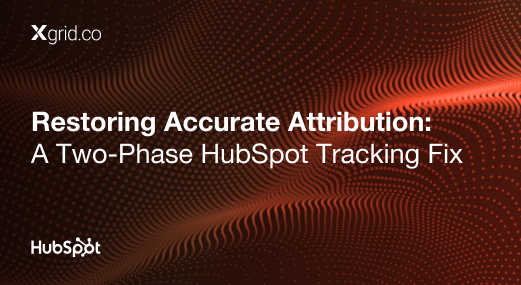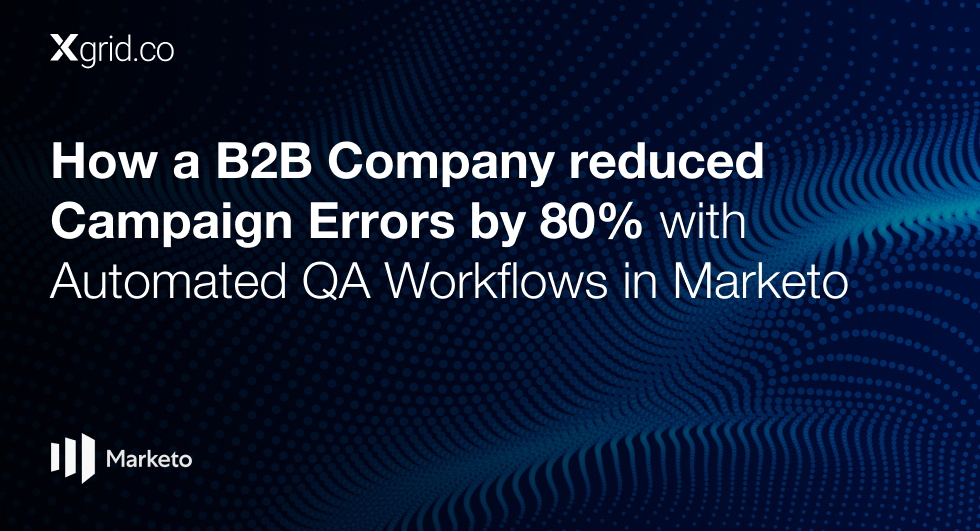Smarter Timing in HubSpot, Real Results: Turning Generic Campaigns Into 30% More Engaging Journeys
Background: One Funnel Didn’t Fit All
An insurance-focused B2B marketing team was managing multiple policy segments — Commercial, Auto, Home, and Fire & Rescue — but their HubSpot automation wasn’t keeping up. Generic workflows treated every contact the same, ignoring the different timing, lifecycle patterns, and engagement behaviors of each policy type.
The result? Overlapping campaigns, incomplete reporting, and missed engagement opportunities across their funnel.
The Problem: Inflexible Workflows, Incomplete Visibility
Their existing setup wasn’t built for nuanced segmentation. Specific problems included:
- Campaigns lacked timing precision across policy types — one send time for all
- Lifecycle stages weren’t customized or tracked accurately
- Duplicate records emerged from delays and mismatched policy data
- Standard HubSpot reports didn’t offer policy-specific performance insights
The team needed segmented automation, cleaner data logic, and funnel visibility they could trust.
The Solution: Policy-Specific Lifecycle Tracking and Smart Scheduling
We designed a tailored HubSpot automation strategy, aligning campaign timing, lifecycle customization, and segment-specific reporting for each policy type — giving the team clarity and control over their multi-product funnel.
What We Built (Step-by-Step)
1. Segment-Based Campaign Timing
- Created five dedicated HubSpot workflows scheduled by segment:
- Commercial: Tuesdays @ 12:30 PM
- Unsegmented: Tuesdays @ 1:00 PM
- Auto: Wednesdays @ 1:15 PM
- Home: Wednesdays @ 2:00 PM
- Fire & Rescue: Thursdays @ 1:15 PM
- Used contact timezone logic to deliver messages at the optimal local time for each contact
2. Customized Lifecycle Logic by Policy Type
- Aligned workflows with HubSpot lifecycle stages
- Prevented premature transitions (e.g., from MQL to SQL) using custom timing and policy filters
- Created custom properties like “Auto Policy Status” and “F&R Lifecycle Checkpoint” for deeper funnel tracking
3. Lifecycle Reporting That Reflects the Real Funnel
- Integrated policy-segmented lifecycle data into custom HubSpot reports
- Built time-based filters to analyze progression across campaigns and cohorts
- Enabled comparisons of funnel performance by policy type, lead source, and engagement timing
4. Smarter Duplicate Prevention
- Enhanced duplicate detection logic to include policy type and lifecycle discrepancies
- Automated merge and alert logic for duplicates caused by similar names or delayed syncs
- Improved record hygiene without compromising campaign integrity
Results: More Relevant Campaigns, Cleaner Funnels, Smarter Insights
- Engagement rates increased 30% due to well-timed, segment-specific campaigns
- Reporting accuracy improved, especially in tracking contact-to-customer conversion by policy type
- Duplicates reduced by over 50% thanks to custom logic and improved filtering
- Lifecycle dashboards allowed the team to predict which policy segments were trending toward conversion
Key Takeaways
- Segment-specific timing can significantly improve campaign performance in multi-product funnels
- Lifecycle tracking is more powerful when it’s policy-aware, not just stage-aware
- Building segmentation into workflows and reports is critical for scalable personalization
Best Practices to Borrow
- Use timezone-based scheduling to avoid overlapping workflows and improve open rates
- Define custom lifecycle stages that reflect the nuances of each policy segment
- Implement conditional logic to manage duplicates based on policy fields, not just email or name
Pro Tip: Want HubSpot workflows optimized for your business? Check out our HubSpot Consulting Services to build smarter automation and cleaner, high-performing funnels.




